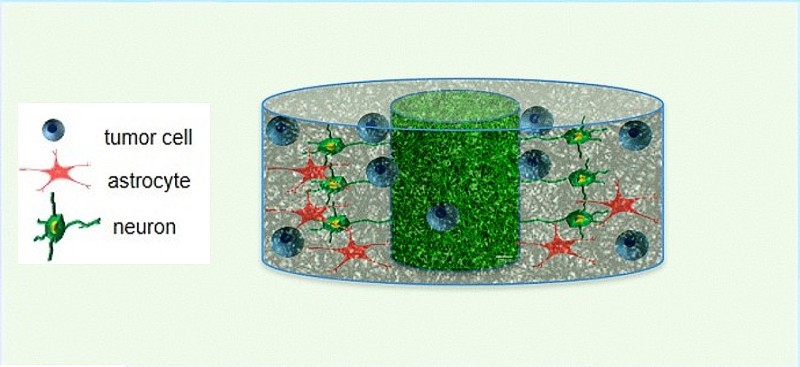The U.S. Food and Drug Administration recently approved two new wound management products that include patented hydrogels invented by University of Delaware researchers. The unique UD hydrogel materials self-assemble to form a 3D matrix compatible with living cells.
Tag: Chemotheraphy
Researchers from IRB Barcelona and Sant Joan de Déu unveil the origin of second pediatric cancers and chemotherapy-induced mutations in healthy tissues
A team from IRB Barcelona and Sant Joan de Déu Hospital · IRSJD has studied the cases of four children who have experienced two cancers during childhood and has addressed the origin of the second tumour.
Sister cells uncover pre-existing resistant states in cancer
Labeling cancer cells with genetic barcodes
“In ReSisTrace, we label cancer cells uniquely with genetic barcodes and allow them to divide once, so that we get two identical sister cells that share the same barcode.
Breast cancer test may make bad chemotherapy recommendations for Black patients
Test may underestimate the benefit of chemotherapy for Black women, especially those who are young
Common chemotherapy drugs don’t work like doctors thought, with big implications for drug discovery
A new study from the University of Wisconsin–Madison suggests that chemotherapy may not be reaching its full potential, in part because researchers and doctors have long misunderstood how some of the most common cancer drugs actually ward off tumors.
Pediatric hepatoblastoma model hints at DNA damage repair pathway for novel therapeutics
Scientists at St. Jude Children’s Research Hospital used genomics to inform the creation of genetic and new cell-line models for hepatoblastoma, which pointed toward the DNA damage repair pathway as a promising therapeutic route.
Researchers ID Protein That May Protect the Heart During Certain Cancer Treatment Regimens
Researchers identified a protein linked with the onset of anthracycline-associated cardiac toxicity. In two studies conducted in women undergoing treatment for breast cancer, levels of a protein known as hemopexin circulating in the blood were associated with increased cardiac toxicity.
Case Western Reserve University signs license agreement to bring artificial intelligence breakthroughs closer to cancer patient care
Case Western Reserve University has signed an exclusive license agreement with Picture Health that aims to turn the promise of AI tools into a reality that ultimately benefits patients around the globe.
Controlling Cholesterol in Microglia Alleviates Chronic Pain, Opioid-Free
Chemotherapy can induce a painful peripheral neuropathy (CIPN), a chronic condition and common adverse effect for cancer patients undergoing treatment. Researchers at University of California San Diego School of Medicine, with colleagues elsewhere, have used a mouse model to demonstrate the pivotal role of cholesterol in CIPN, and proposed a novel therapeutic approach to reverse it.
Single-Cell RNA Sequencing Sheds New Light on Cancer Cells’ Varied Response to Chemotherapy
Single-cell analysis, done in three colon cancer cell lines, is believed to be the first to profile transcriptome-level changes in response to DNA damage across individual cells.
Understanding ‘Chemo Brain’ in Children: Researchers Secure $4.6 Million NIH Grant to Identify Those at Risk
Chemotherapy usually cures children diagnosed with acute lymphoblastic leukemia (ALL), but the treatment may hamper brain development and impact key cognitive functions including sensory processing, memory, and attention. Researchers at Albert Einstein College of Medicine, Children’s Hospital at Montefiore (CHAM), and Rutgers Cancer Institute of New Jersey have received a five-year, $4.6 million grant from the National Institutes of Health (NIH) to determine how chemotherapy exerts its damaging effects on the brain. Their long-term objective is to use this information to develop protective interventions that can prevent permanent harm.
Cardioprotective Drug Prevents Severe Cardiac Events in Children Undergoing Chemotherapy for Acute Myeloid Leukemia
The cardioprotective drug dexrazoxane preserved cardiac function in pediatric patients undergoing chemotherapy for acute myeloid leukemia (AML) without compromising overall patient survival and potentially improving it, according to a new study by researchers at Children’s Hospital of Philadelphia (CHOP). The results suggest dexrazoxane should be considered for cardioprotection in all pediatric patients undergoing standard chemotherapy for AML.

Massive study reveals how “hypermutated” malignant brain tumors with many mutations escape chemotherapy and immunotherapy
An analysis of more than 10,000 gliomas and clinical outcomes reported in Nature by scientists in Boston and Paris found that glioma patients whose tumors were hypermutated actually had no significant benefit when treated with checkpoint blockers.

Study sheds light on fatty acid’s role in “chemobrain” and multiple sclerosis
A study led by The University of Texas MD Anderson Cancer Center has found that myelin is surprisingly dynamic, a discovery that has implications for treatment of multiple sclerosis and a type of myelin damage caused by some chemotherapy drugs, often referred to as “chemobrain.”
Baylor University Interior Design Team Helps Prepare a Hyperclean Play Space for Children with Compromised Immunity
A Baylor University interior design team is assisting Decon7 Systems — manufacturer of a powerful disinfectant used by the military, first responders and, most recently, hospitals in China as they battle Coronavirus Disease (COVID-19) 19 — in designing a hyperclean play space for children with diseases that compromise their immunity.
Exercise during Chemo, Activity Breaks Enhance Mood, Reducing Diabetes Risk in African American Men & More from Medicine & Science in Sports & Science
If you’re looking for health and fitness story ideas, view these research highlights from Exercise and Sport Sciences Reviews and Medicine & Science in Sports & Exercise®, ACSM’s flagship research journal.

Cancer therapy may be aided by induced macropinocytosis, a rarely reported form of cell death
A metabolic inhibitor was able to kill human cancer cells of the skin, breast, lung, cervix and soft tissues through a non-apoptotic route — catastrophic macropinocytosis. The inhibitor acted synergistically with the chemotherapy drug, cyclophosphamide, in mouse xenografts to reduce tumor growth.

3D brain tissue system aids study of deadly tumor progression
Made with extracellular matrix (ECM) from pig brains and seeded with tumors from patients, the system is revealing tumor/ECM interactions that aid tumor growth, providing potential targets for new therapies.